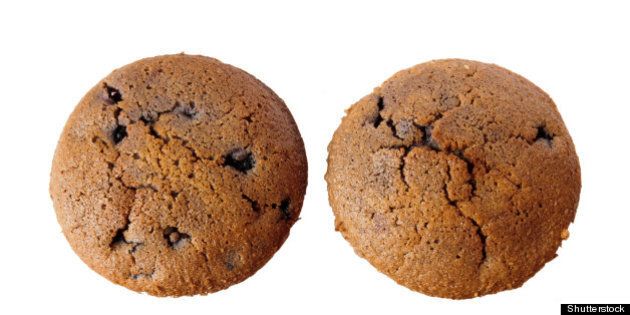
It's the protein that makes your bread stretchy and chewy. Gluten is found in wheat and other grains, in processed foods as a thickener, and in meat substitutes like veggie burgers.
Even though it's been around for ages, an increasing number of people are reducing or removing gluten from their diets, which is why you may have noticed an increasing number of gluten-free products on grocery-store shelves and in restaurants.
Some of these people have celiac disease, a medical condition where the absorptive surface of the small intestine is damaged by gluten, leading to nutrient deficiencies and related health problems. The treatment for celiacs, which affects an estimated one in 133 Canadians, is to not eat gluten. Others are gluten intolerant or sensitive, meaning that they don’t have celiac disease but do have trouble digesting it. Some people are specifically allergic to wheat, and it’s not the gluten that causes them problems, while others have just cut gluten-containing grains like wheat from their diets to feel healthier.
But for newbies, it can be overwhelming to cut gluten out of your diet. But just because this protein is found in a lot of different foods, don’t assume being gluten-free means you’ll never have a good meal again. There are a ton of foods out there that are naturally gluten-free, or made to replace those that usually have gluten. It’s difficult to change your diet, but it also gives you a chance to try new foods and find new favourites.
In honour of Celiac Awareness Month, we've rounded up 11 ways to live gluten-free and love it.
Focus On What You Can Eat
If you spend all your time lamenting the fact that you can't ever eat pasta, bread or cookies, you'll be miserable. There are a ton of great gluten-free substitutes, even more than there were two years ago. If you're going gluten-free for the first time, remember: there are still so many things you can eat and it's much healthier to focus on that. Shauna James Ahern, who blogs at Gluten Free Girl, got the word "YES" tattooed on her wrist shortly after her diagnosis of celiac disease as a reminder to approach life with openness.
Learn The Grains You Have To Avoid
As much as you should focus on what you can have in your diet, the reality is that if you're going gluten free, you do have to avoid some grains. Wheat, rye, barley, and their derivatives are all striken. Some people have to be more careful than others about cross-contamination, whether it's in a factory or in their own kitchens. This list has the basics of what to avoid. Memorize it.
Learn How To Read Labels
Reading food labels is a good idea for a lot of reasons, especially since gluten can hide in unlikely places. Did you know it's a main ingredient in licorice candy? Fortunately, new labelling laws that list common allergens came into effect in Canada in 2012. The list won't necessarily highlight any ingredient that contains gluten, but they do make it clear if you need to avoid something because it contains wheat.
Fall In Love With Produce
Fruits and vegetables in their natural state never have gluten which means they're always a safe choice if you're avoiding it. A great side benefit, of course, is that fruits and vegetables are healthy. Use your gluten-free diet as an excuse to try all the exotic produce you've been curious about but haven't picked up before. Dragonfruit is still a better deal than gluten-free pretzels!
Put Indian Food On Speed Dial
Certain cuisines are just going to be better options for dining out once you're on a gluten-free diet. Italian is obviously tough, with all that pasta and pizza, though more and more restaurants are offering gluten-free options. Anything fried is generally out, from Southern fried chicken to Japanese food. But Indian food is great — you get healthy fibre from the legumes and beans used, and the sauces are generally thickened with yogurt, not wheat. You'll have to avoid most of the breads, but some — like dosas — are made with chickpea flour instead of wheat. And the menus are usually large, which means plenty of options.
Brush Up On The Quinoa Craze
Popular superfood quinoa provides an excellent solution for not getting enough fibre. This grain-like seed contains fibre and protein, and cooks up much like couscous. It's versatile and takes on other flavours easily, and it's a great way to add some nutritional oomph to your diet. Quinoa 365 and Quinoa Revolution have dozens of great recipes.
Eat Cupcakes
There are some bakers who can do amazing things with gluten-free baking. If you want to try your own hand at gluten-free baking, try the Babycakes cookbooks, written by the owner of the popular NYC-originating bakeries. The recipes are also free of dairy and eggs, if you have other food sensitivities or allergies.
Embrace Rice
A lot of people assume that rice (specifically sticky rice) must have gluten, but it is fortunately gluten-free. This is helpful because it's a grain that's inexpensive, easily found, and very versatile. Rice is key in Chinese, Thai, and Indian cuisines, and its different types —brown, white, arborio, basmati, jasmine — gives you that key variety you’ll be looking for. Noodles and breads made from rice flour can also help to fill some of the new gaps in your diet.
Make Your Own Salad Dressing
Many packaged salad dressings, sauces, and dips contain gluten —it's used as a thickener. That's okay though, because it gives you an excuse to learn how to make your own dressings, which will taste much better and are healthier. Try this: one cup of hemp oil, a half cup of apple cider vinegar, and a half cup of lemon as a dressing. It's got omega fats from the hemp oil and it's particularly delicious on kale.
Buy A Bottle Of Tamari
Wheat can be hidden in a lot of unexpected places, and one of them is soy sauce. This is sad news for fans of Chinese and Japanese cuisine, but don't worry — there's a way to keep enjoying your California roll just as you did before. What we commonly use as soy sauce in North America contains wheat, but in Japan there are actually five main categories of soy sauces that are defined in part by how much wheat they have, which affects the taste. Most of these varieties do contain some wheat and therefore are not gluten-free. However, tamari is usually wheat free, making it safe for a gluten-free diet. It's also relatively easy to find at Asian supermarkets or larger grocery stores.
Get A Bread Machine
If you can't imagine not having bread in your diet regularly, now is a great time to get a bread maker and learn how to use it. There are a ton of gluten-free flours, all with different properties and tastes. There are also many gluten-free breads available in grocery stores, but you may not like the price. If you're going to be spending more to eat bread, you might as well be making it yourself. If you're especially ambitious, you can skip the bread maker altogether and oven-bake it. Gluten Free Girl has a recipe for no-knead gluten-free bread and Gluten-Free and Vegan Bread: Artisanal Recipes to Make at Home is a great book to start with.
